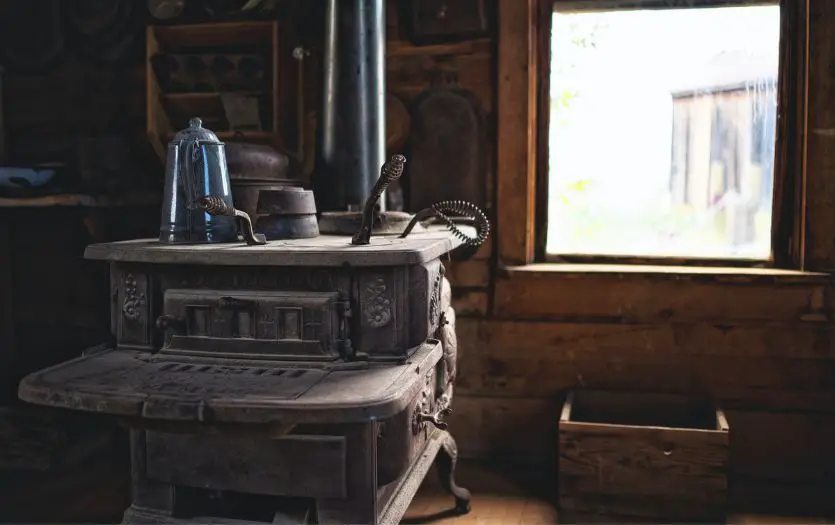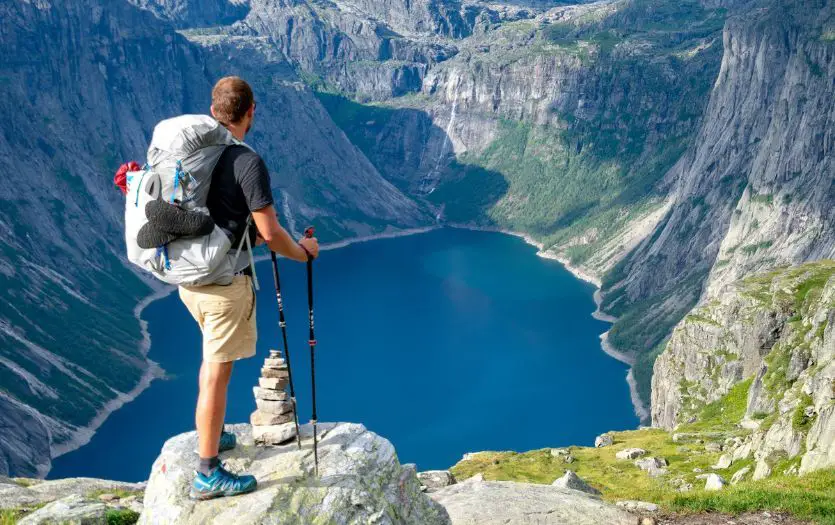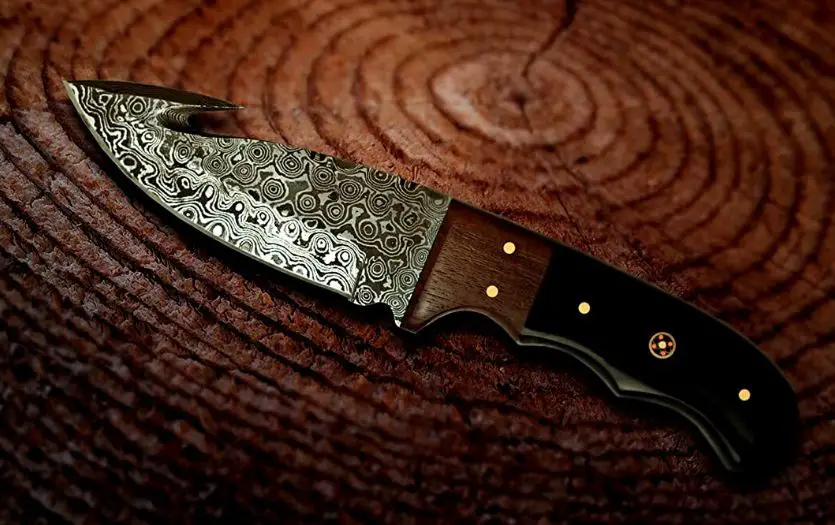Safe Camp Cooking with Dutch Ovens: Avoiding Common Hazards
Learn the essential safety tips for camp cooking with a dutch oven, so you can enjoy your outdoor meals without any risks! Find out how to use and maintain your dutch oven properly in this article – all the information you need to be safe while having fun outdoors.
Dutch oven cooking has been around for centuries and is an adored outdoor activity that many indulge in. However, it comes with its own list of safety concerns one should always observe—from managing hot coals to keeping yourself burn-free!
Dutch Ovens are an integral part of any camping kitchen setup and in this article, we'll go over some of the key safety issues when camp cooking with a dutch oven that you should keep in mind as you enjoy your next outdoor cooking adventure. Whether you're a seasoned pro or new to dutch oven cooking, these tips will help ensure that you have a safe and enjoyable experience.
Choosing the Right Dutch Oven
Before we dive right into the topic of safety, let's glide through the correct selection of Dutch Ovens, so that you can have a beautiful camp cooking experience be it on a portable stove or a campfire.
When choosing a Dutch Oven for camp cooking, it's important to consider the size and material. Generally speaking, an oven of size 8 to 10 inches should be sufficient for most campsites, and will easily cook for 4 to 6 people. But depending on the number of people, you can choose a smaller 4 to 6-inch or larger 12-inch or more.
When it comes to the material of your Dutch Oven, you have three main options: cast iron, aluminum, and enamel. Cast iron dutch oven is the most popular material due to its heat retention and durability. Cast iron Dutch Ovens also produce a natural, even heating that is perfect for cooking a variety of meals.
Aluminum ovens are lighter but not as effective in heat retention. While Enamel-coated cast iron Dutch Ovens have a non-stick property and are easier to clean but are more fragile and prone to chipping and cracking, especially if you cook on campfires.
In addition to the material, it's important to consider the weight of your Dutch Oven. Cast iron Dutch Ovens can be quite heavy, which makes them less portable than aluminum or enamel Dutch Ovens. If you plan to do a lot of hiking or backpacking with your Dutch Oven, you may want to choose a lighter option.
Lastly, you should consider the lid of the Dutch Oven, and make sure that it fits tightly to ensure even cooking and moisture retention. Also, make sure that your oven has handles that are easy to grip and lift.
Also, check out the video to know some more about Dutch Oven basics:
Handling hot coals safely
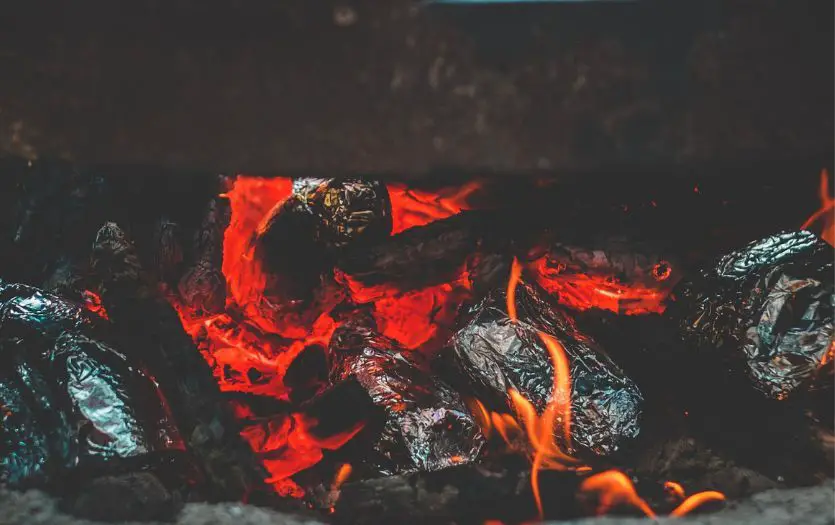
Properly handling hot coals is essential for safe dutch oven cooking in the great outdoors. The placement of the coals can greatly impact the cooking process, and is crucial for even heating and even preventing accidental fires so it's important to arrange them in a way that allows for even heating.
When arranging the coals, it's important to create a "coal bed" that will allow for even heating of the dutch oven. To do this, you'll want to place a layer of coals on the bottom of the oven and another layer on the top, leaving some space in between for the heat to circulate.
It's also important to use caution when adding or removing coals from the oven, as they can stay hot for a long time and can cause burns if touched improperly. Always use heat-resistant tools, such as tongs or a coal shovel, and be sure to wear protective gear such as oven mitts to protect your hands.
It's also a good idea to have a designated area for storing and handling hot coals, away from flammable materials and out of reach of children and pets.
Preventing burns
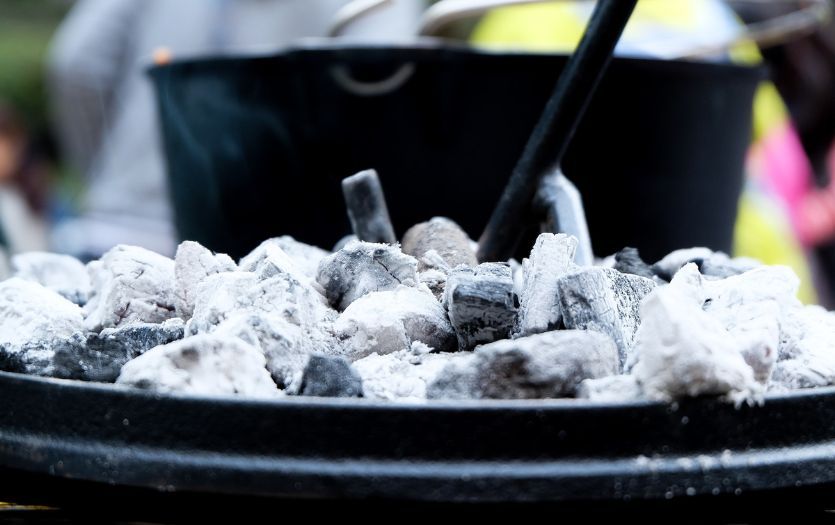
The oven, lid, and handles can get extremely hot during cooking, and it's important to use caution when handling them to avoid burns. Wearing protective gear such as oven mitts and long sleeves can help protect your skin from accidental contact with hot surfaces.
It's also a good idea to use a trivet or heat-resistant surface when serving hot food to prevent burns from steam or spills. Additionally, be cautious around steam and hot liquids, as these can also cause burns.
Remember to keep a safe distance when opening the dutch oven lid to allow steam to escape, and use a long-handled spoon or ladle when serving hot soups or stews to avoid splashes. Following these precautions and applying some common sense can help ensure a burn-free outdoor cooking experience.
Other safety tips
In addition to handling hot coals and preventing burns, there are other safety tips to keep in mind when camp cooking with a dutch oven. These include:
- Properly maintaining and cleaning your dutch oven: This will help ensure that it is in good working order and doesn't pose any safety hazards. Be sure to follow the manufacturer's instructions for cleaning and care.
- Storing your dutch oven safely when not in use: If you're not using it, be sure to store it in a safe and secure location, away from heat and flame.
- Using caution when cooking with fire: Make sure you have a designated cooking area that is clear of flammable materials, and follow all fire safety guidelines when building and tending to your fire.
Following these safety tips can help ensure a safe and enjoyable dutch oven cooking experience on your next outdoor adventure.
What you need for campfire dutch oven cooking
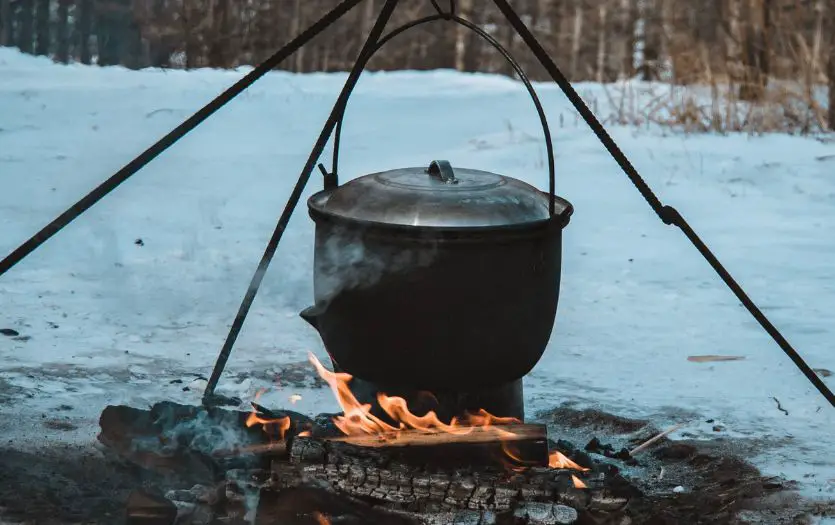
Campfire dutch oven cooking is a fun and satisfying outdoor activity, but it does require some specialized equipment to do it safely and effectively. Here are some of the key items you'll need for campfire cooking:
- Dutch oven: This is the star of the show, and you'll need a sturdy, high-quality dutch oven that can withstand the heat of the coals. Look for one made of cast iron with a tight-fitting lid to retain heat and moisture.
- Heat-resistant gloves or oven mitts: These will come in handy for handling the hot dutch oven and coals.
- Coal shovel or tongs: These tools will help you safely add and remove coals from the oven.
- Trivet or heat-resistant surface: This will help protect your table or cooking area from the heat of the dutch oven and prevent burns.
- Long-handled utensils: It's a good idea to have a few long-handled utensils, such as spoons or tongs, on hand to help you safely reach into the dutch oven without burning yourself.
- Water and fire extinguisher: It's always a good idea to have a supply of water and a fire extinguisher nearby in case of accidental fires.
With these items in your camp cooking arsenal, you'll be well-equipped to safely and successfully enjoy dutch oven cooking on your next outdoor adventure.
Final Words
In conclusion, camp cooking with a dutch oven is a fun and rewarding outdoor activity, but it's important to keep safety in mind. Whether you're a seasoned pro or new to dutch oven cooking, these precautions are essential to keep in mind as you enjoy your next outdoor cooking adventure.
So don't let safety concerns hold you back – with a little care and attention, you can enjoy the delicious rewards of dutch oven cooking while staying safe and protected.
And before you get started, don't forget to check out our article on the best Dutch Ovens for camping that you should get before your wild adventure. We have researched several products and compiled a list of the ones that are best suited for camp cooking. Tap the button below and check them out:
If you love outdoor cooking, also check out some of our other articles:
Also, check out some of our other articles:
